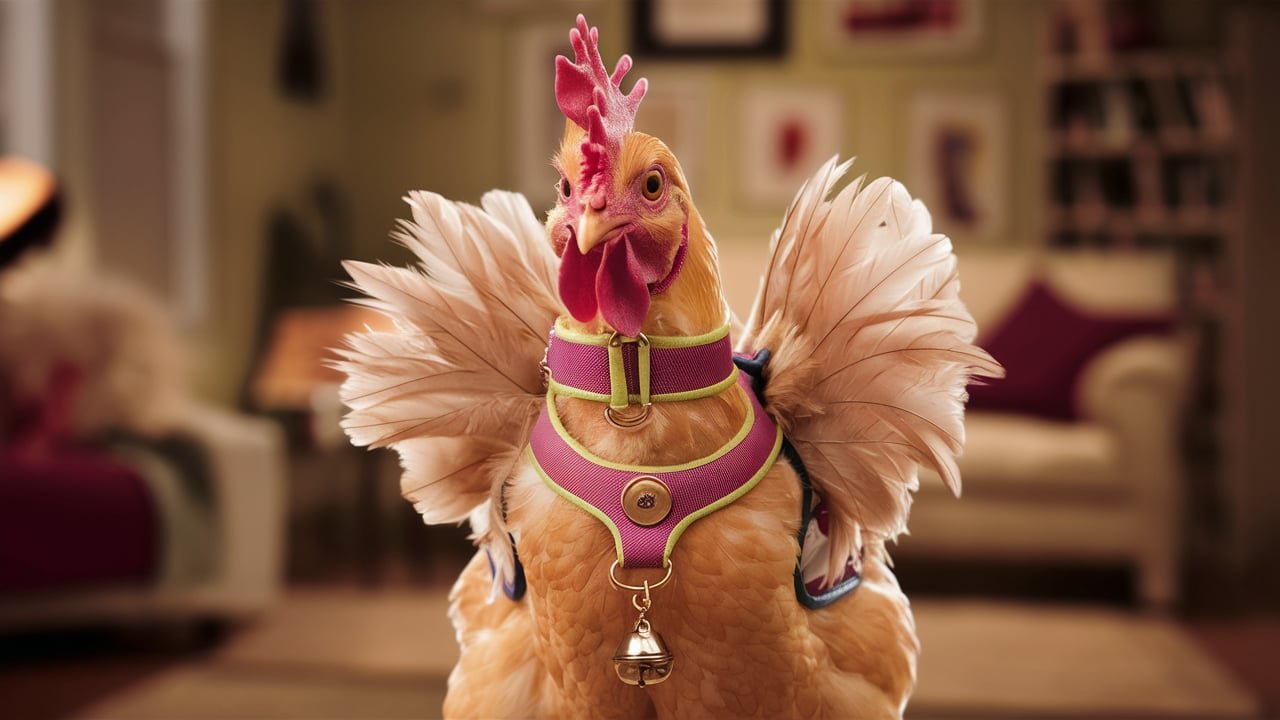H-Style Cat Harness on Chicken: A Safe and Comfortable Fit

Introduction
Using an H-style cat harness on a chicken may sound unconventional, but it can be an excellent solution for poultry owners who want to safely take their feathered friends outdoors. Chickens, like cats and small pets, can benefit from the control and security of a harness, preventing them from wandering too far or getting into dangerous situations. However, ensuring the right fit and proper use is crucial to keeping your chicken comfortable and stress-free. In this article, we will explore why an H-style cat harness is a suitable choice for chickens, how to introduce and fit the harness properly, and the benefits of using one.
Why Use an H-Style Cat Harness for Chickens?
Chickens are naturally curious creatures that enjoy foraging and exploring their surroundings. However, allowing them to roam freely can expose them to predators, traffic, or other hazards. An H-style cat harness provides a practical solution for safely guiding a chicken while still allowing some freedom of movement. The advantages of using an H-style cat harness include:
- Security and Control: It helps prevent the chicken from wandering off or getting lost.
- Comfortable Fit: Unlike some other harness types, the H-style harness distributes pressure evenly, reducing discomfort.
- Prevents Injury: The design minimizes strain on the chicken’s neck and wings.
- Great for Training: If you want to train your chicken for walks or controlled outdoor time, a harness is an excellent tool.
Choosing the Right H-Style Cat Harness for a Chicken
Not all cat harnesses are suitable for chickens, so selecting the right one is essential. Here are some factors to consider:
- Adjustability: Chickens have different body structures than cats, so an adjustable harness ensures a secure and snug fit.
- Material: Soft, breathable fabric prevents irritation or discomfort.
- Size: A harness that is too tight will restrict movement, while one that is too loose may allow the chicken to escape.
- Safety Buckles: Secure fasteners ensure the harness stays in place without being too restrictive.
It is advisable to test the harness on a stuffed toy or object similar in shape to a chicken before attempting to fit it on your bird.
How to Put an H-Style Harness on a Chicken
Introducing a harness to a chicken requires patience and a gentle approach. Follow these steps for a successful fitting:
- Choose a Calm Setting: Avoid loud noises or distractions that could make the chicken nervous.
- Allow Familiarization: Let the chicken inspect the harness by placing it near their coop or favorite foraging area.
- Gentle Handling: Pick up the chicken calmly and support its body.
- Adjust the Straps: Loosen the harness and carefully slip the neck strap over the chicken’s head.
- Secure the Body Strap: Wrap the body strap around the chicken’s chest and fasten it snugly without being too tight.
- Check for Comfort: Ensure the harness is not restricting the chicken’s wings or breathing.
- Supervised Time: Let the chicken wear the harness indoors for short periods before taking it outside.
Training a Chicken to Walk with a Harness
Training a chicken to walk in a harness requires patience and positive reinforcement. Some birds adapt quickly, while others may take longer to feel comfortable. Follow these steps for effective training:
- Start Indoors: Let the chicken wear the harness in a safe indoor space before introducing them to an outdoor environment.
- Use Treats: Reward the chicken with treats to create a positive association with wearing the harness.
- Encourage Movement: Gently guide the chicken by using a treat or food incentive.
- Short Walks: Begin with short, supervised walks and gradually increase the duration.
- Observe Reactions: If the chicken shows signs of distress, remove the harness and try again later.
Benefits of Using an H-Style Cat Harness on a Chicken
Using a harness on a chicken offers several benefits beyond just keeping them safe. Some key advantages include:
- Safe Outdoor Exploration: Chickens can enjoy foraging without the risk of getting lost.
- Bonding Opportunity: Walking a chicken with a harness strengthens the relationship between the bird and its owner.
- Exercise and Enrichment: A harness allows chickens to explore new areas, reducing boredom and stress.
- Vet Visits and Travel: A harness makes it easier to transport a chicken safely when needed.
Common Challenges and How to Overcome Them
While using a harness on a chicken can be beneficial, some challenges may arise. Here’s how to address them:
- Chicken Resists the Harness: Gradual exposure and positive reinforcement help chickens adjust.
- Harness Slipping Off: Ensure proper fit and adjustments to prevent escape.
- Chicken Refuses to Walk: Encourage movement with treats and gentle guidance.
- Fear or Anxiety: Avoid forcing the harness and allow the chicken to get used to it at its own pace.
Frequently Asked Questions (FAQs)
1. Can all chickens wear a harness? Not all chickens will tolerate a harness. Some breeds or individual birds may be more accepting, while others may find it too stressful.
2. How long can a chicken wear a harness? It is best to limit harness time to short periods, typically 15-30 minutes, to prevent discomfort.
3. What if my chicken refuses to walk in the harness? Give your chicken time to adjust. Use positive reinforcement and keep training sessions short and rewarding.
4. Can a harness harm my chicken? If fitted properly, a harness should not harm the chicken. However, improper use or a poor fit can cause discomfort or stress.
5. Can I use a leash with the harness? Yes, a lightweight leash can be attached for controlled movement, but never pull forcefully on the leash.
Conclusion
Using an H-style cat harness on a chicken can be a practical and safe way to allow controlled outdoor exploration. By choosing the right harness, ensuring a proper fit, and training the chicken patiently, poultry owners can enjoy the benefits of walking their birds in a safe and controlled manner. While some chickens may require more time to adjust, the experience can be rewarding for both the bird and the owner. Whether for safety, exercise, or bonding, a harness provides an innovative way to enhance a chicken’s lifestyle while keeping them secure and comfortable.



